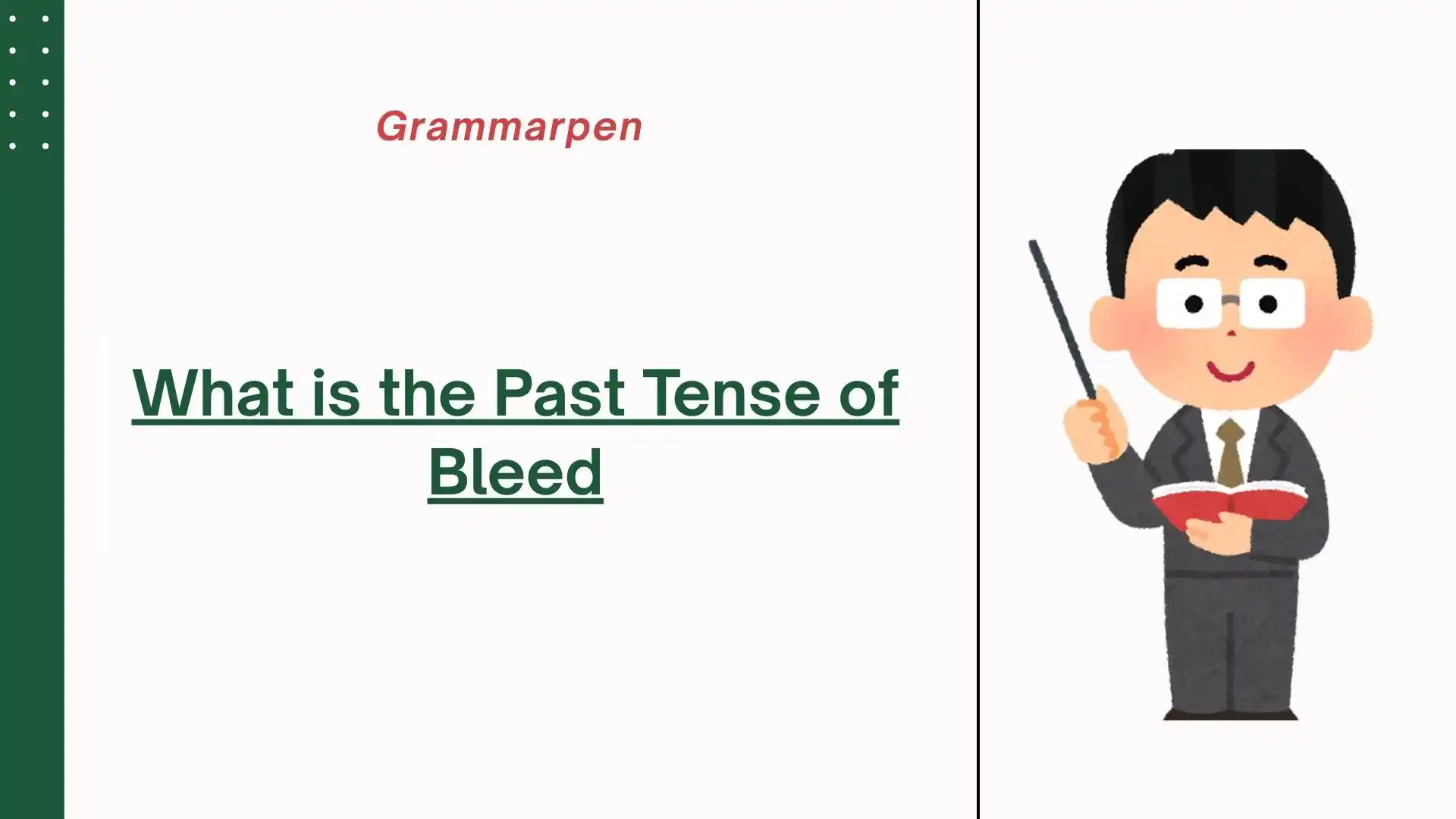What is the Past Tense of Bleed

The past tense of bleed is bled. This is true for both the simple past and the past participle. If someone asks you, “What happened when you cut yourself?”
you could correctly answer, “I bled.” In the same way, when forming the present perfect tense, you would say, “I have bled” or “She has bled before.” The spelling does not change between the simple past and past participle forms.
READ ALSO: What is the Past Tense of Split?
Why Is It Bled and Not Bleeded?
English has regular verbs that form their past tense by adding -ed to the base form, and irregular verbs that do not follow that rule.
Bleed is an irregular verb, meaning its past tense form changes in a way that cannot be predicted by simply adding -ed.
Instead of bleeded, the correct form is bled. Linguists explain that bleed belongs to a small group of irregular verbs that shorten or alter the internal vowel when moving from present to past tense. Other verbs in this group include feed (fed), breed (bred), and lead (led).
The Linguistic Reason Behind the Change
Research in linguistics and cognitive psychology shows that irregular verb forms like bled are stored in memory rather than created through rules at the moment of speaking.
Steven Pinker’s “Words and Rules” theory explains that regular verbs are formed using grammatical rules while irregular verbs rely on stored knowledge of their unique forms.
In brain studies, the retrieval of irregular forms like bled activates memory-related regions rather than the areas used for rule application. This is why learners must memorize bled instead of trying to create a past tense form by adding -ed.
Examples of Bled in Sentences
To understand the correct use of bled, here are examples in different contexts:
-
After tripping on the sharp rock, he bled from a deep cut on his knee.
-
The ink bled across the page when the paper got soaked in the rain.
-
She bled heavily before the ambulance arrived.
-
Rust from the old pipes bled into the clear water, turning it brown.
Each example shows bled in a natural context, proving that it works in both literal and figurative meanings.
READ ALSO: What is the Past Tense of Swing?
Why Correct Usage Matters
Using bleeded in place of bled can sound incorrect and unnatural to native speakers. Over-regularization, which means applying a common grammar rule to an irregular verb, is a common stage in language learning. Children often say bleeded before they learn the correct form.
However, fluency depends on memorizing and consistently using the accepted irregular forms. Since bled has been the correct form for centuries, it is recognized in every major dictionary and grammar reference.
Common Grammar Confusion with Bled
Some learners mistakenly think bled and bled out mean the same thing. While bled is simply the past tense of bleed, the phrasal verb bled out usually means losing so much blood that life is at risk.
This distinction is important in both medical and everyday usage. Similarly, the figurative sense of bled can mean resources being drained, as in “The company bled money during the crisis.”
Historical Development of the Word
The verb bleed comes from Old English blēdan, which meant “to emit blood” or “to gush liquid.” In Middle English, the vowel sound shifted, and the past tense was shortened to bled.
This pattern was preserved because of frequent usage in daily life and literature. Historical language records from the 14th century already show bled being used in its current form.
How to Remember the Correct Form
One effective method to remember bled is to group it with other similar verbs like feed/fed, breed/bred, and lead/led.
By practicing these together, learners build mental connections that make recall easier. Reading stories, listening to conversations, and writing sentences with the verb in different tenses also help reinforce correct usage.
Frequently Asked Questions
1. Is Bled Used for Both Simple Past and Past Participle?
Yes. You can say “He bled yesterday” for the simple past and “He has bled many times” for the present perfect.
2. Can I Ever Use Bleeded?
No. Bleeded is incorrect in standard English and is not accepted in formal writing or speech.
3. Do All Dialects Use Bled?
Yes. While some dialects bend grammar rules in casual speech, bled remains the accepted past tense form of bleed in all recognized varieties of English.
4. How Can I Use Bled Figuratively?
You can use bled to describe situations where something is drained or wasted, such as “The government bled resources on unnecessary projects.”
5. Is There Any Memory Trick for Bled?
Link it to led from lead. Both drop the extra vowel and use the same pattern, which can make memorization easier.
READ ALSO: What Is the Correct Term for a Group of Shrimp?
Final Thoughts
The past tense of bleed is bled, and there is no situation in standard English where bleeded is correct. It is an irregular verb that keeps the same form for both the past tense and past participle.
Historical development, frequent use, and memorization have preserved this form in modern English. By practicing with real examples, grouping it with similar verbs, and avoiding over-regularization, learners can master it quickly. Understanding the difference between regular and irregular verbs also strengthens overall grammar skills.
